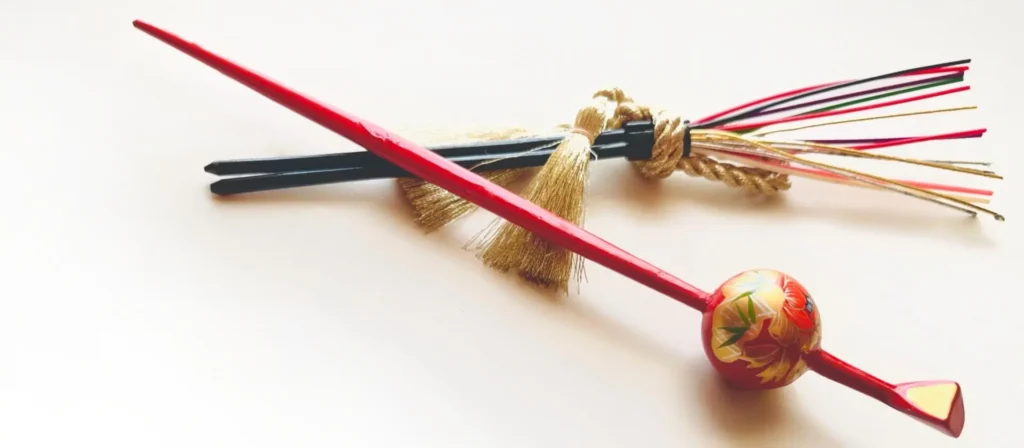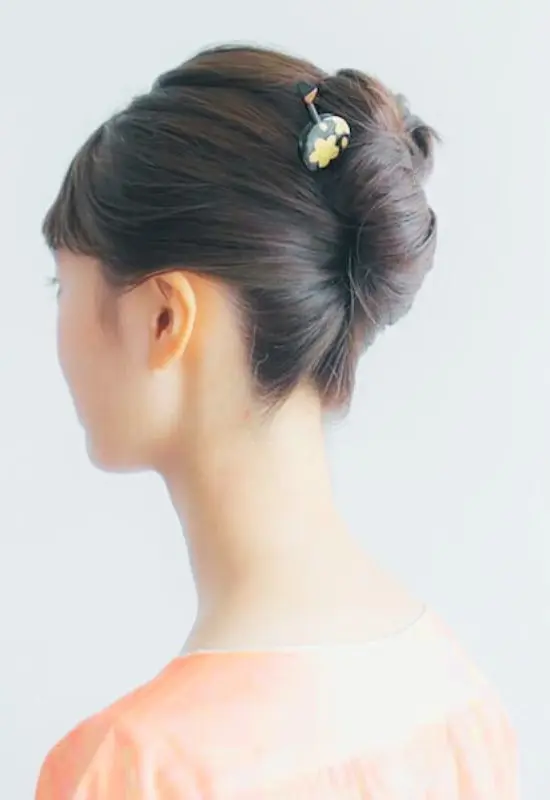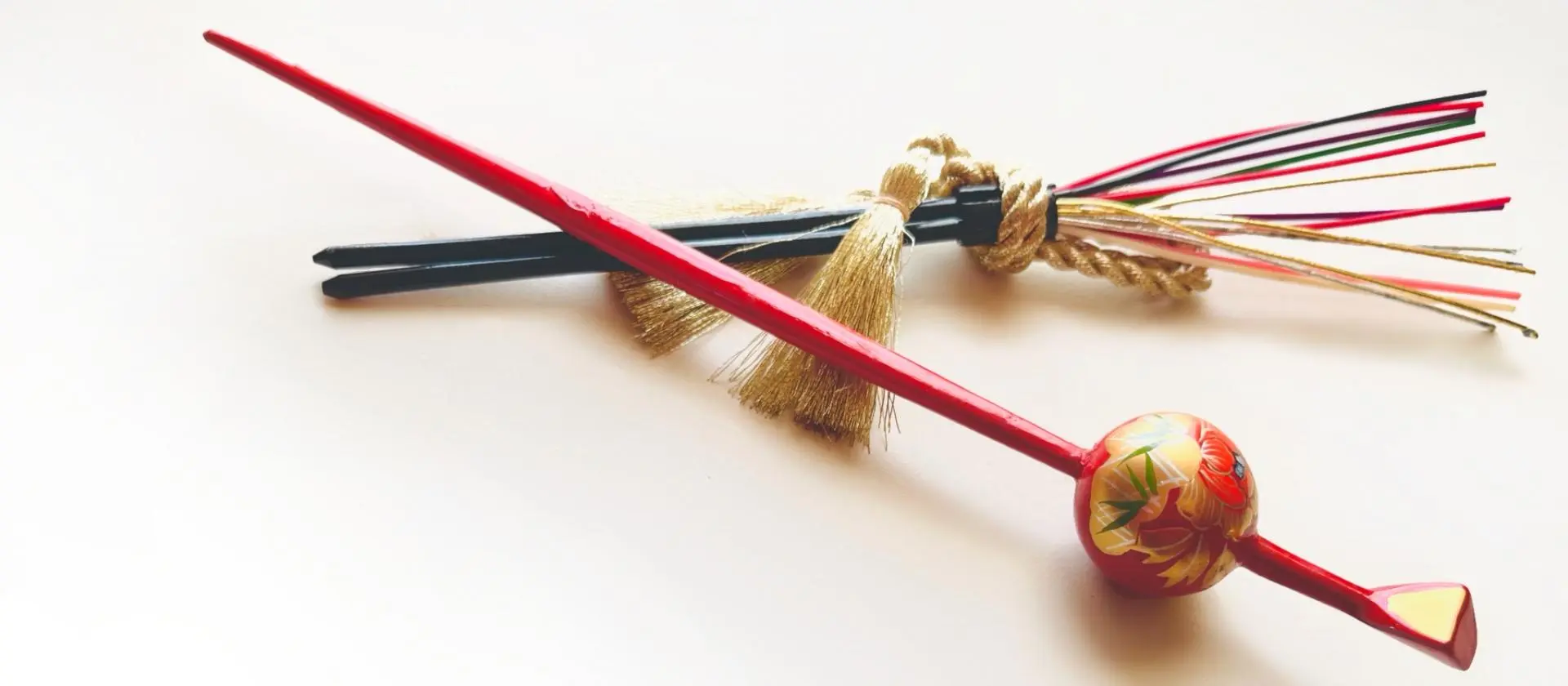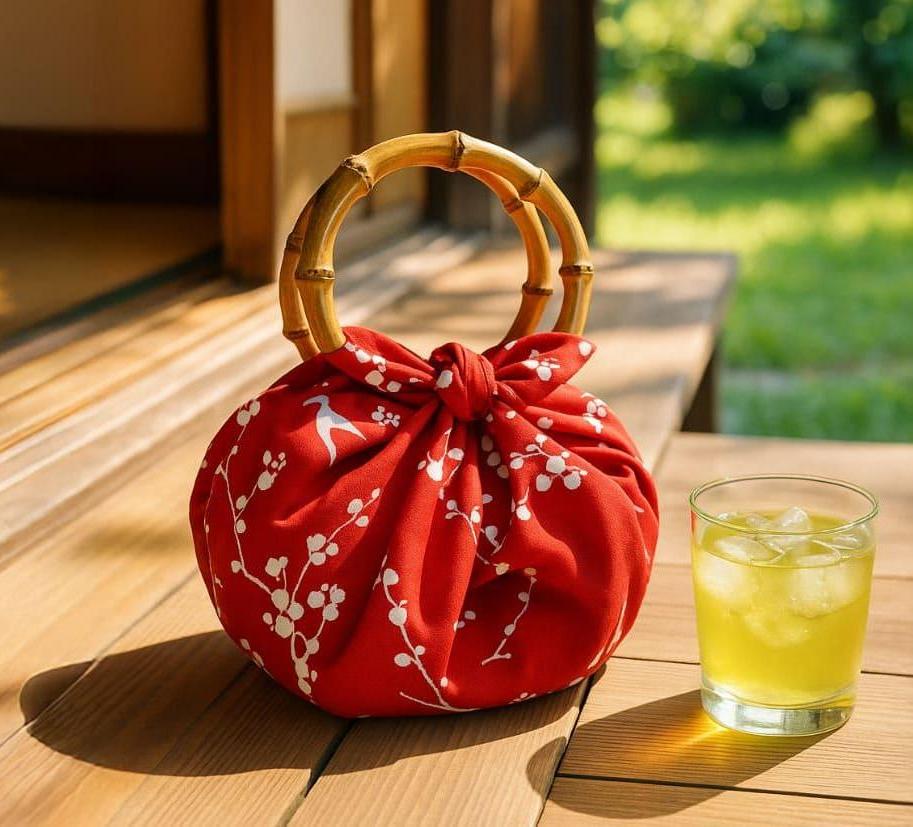Have you ever heard of kanzashi?
Even if you have, chances are you’ve never actually used one.
And yet, despite its obscurity, kanzashi has a kind of charm that refuses to fade.
In this article, I’ll take a closer look at this traditional Japanese hair ornament through the eyes of someone living in modern Japan.

1. What Exactly Is a Kanzashi?
A kanzashi is a slender stick used to hold or decorate the hair.
They come in many forms — made from wood, metal, resin, or glass — from simple single sticks to ornate pieces with flowers and pendants.
Back in the 19th century (or earlier), it served both as a practical hair tool and a sign of status or beauty.
So where does kanzashi stand in Japan today?
Outdated? Yes.
But not exactly out of fashion — a curious kind of in-between.
Why that is, we’ll get to later.
In everyday Japanese life, you almost never see someone actually wearing one.
If your wife said, “I’m just going to the supermarket, maybe I’ll put my hair up with a kanzashi,”
you might wonder what occasion she’s dressing for.
These days, kanzashi are mostly reserved for special moments — kimono events, weddings, coming-of-age ceremonies.
Sometimes magazines claim they’re “making a comeback,” but that’s wishful thinking.
In modern Japan, kanzashi belongs to that rare category of things that are widely known, yet rarely used.
And yet, there’s something oddly appealing about it.
You can probably feel that too, just by looking at the photo below.

What do you think?
Even if you’re seeing it for the first time, you might sense what I mean.
But can you actually use it?
Yes — though it’s harder than it looks.
That difficulty is exactly what defines its place in today’s Japan.
In the next section, I’ll show you how to use a kanzashi properly —
and, for those who’ll inevitably think “Yeah, no way,” there’s also a plan B.
So don’t leave yet. Stay with me.
2. How to Use a Kanzashi (With Video Link)
A kanzashi is basically a hairstyling stick.
Or to be honest — just a stick.
If you’ve never used a hair stick before, you might wonder how on earth you could hold up your hair with something like that.
Here’s how it actually works — and, in case you find it too tricky, a simple alternative that works just as well.
The Classic Way
- Prep
Before you start, it helps to apply a small amount of hair cream or wax to keep your hair smooth and easy to manage.
(If you’re in a hurry, you can skip this.) - How to Insert
① Hold the base of your hair and twist it. It’s easier if you start from a low bun.
② Keep holding the twisted hair and insert the kanzashi diagonally from the center of the back of your head.
③ Rotate the stick clockwise while keeping it stable.
④ Once it catches the hair securely, push it downward at a slight angle to lock it in place.
🎥 Video tutorial (YouTube, Amida Kyoto)
…And yes, it’s difficult.
At first, you’ll probably twist too tight and can’t turn the stick, or too loose and it falls apart in seconds.
But with a little practice, it really does work — and it feels surprisingly solid once you get it right.
The Easy Way (Plan B)
Of course, many people just want something cute and quick — no technique, no training.
If that’s you, do this instead:
Make your usual bun with a hair tie first, then slide the kanzashi in diagonally at the end.
That’s it.
Technically you’ve given up on its “function” part, but you’re keeping the “pretty” part —
which is perfectly legal in Japan. Probably in your country, too.
3. A Bit of Background — and a Suggestion
Kanzashi has a surprisingly romantic past.
During the Edo period, giving a kanzashi to a woman was said to be a wordless form of proposal.
“If you wear this in your hair, it means you’ve accepted my feelings.”
Of course, if a man today appeared with a marriage form in one hand and said,
“You put in my kanzashi, so let’s go to city hall,”
he’d probably be reported to the police.
Still, it’s fascinating that something as simple as a hair ornament once carried both aesthetic beauty and symbolic meaning.
And more importantly—
as I mentioned earlier, wearing a kanzashi with Western clothing is almost unheard of in Japan today.
But perhaps that’s exactly why it’s interesting.
Using one with modern fashion — a shirt dress, a minimalist outfit — could be an unexpectedly stylish move precisely because no one else is doing it.
That, in a sense, is why I call kanzashi outdated,
but never out of fashion.
4. Where to Find Kanzashi in Japan
You can find kanzashi in several places — though not always where you’d expect.
Major tourist spots such as Kyoto, Asakusa, and Kamakura often have small shops that sell them alongside yukata accessories.
Prices range from inexpensive plastic pieces (around 500 yen) to handcrafted works made of lacquered wood or glass, which can cost several thousand yen.
You can also find modern designs at local craft markets and select stores that feature Japanese handmade goods.
Online, a few Japanese retailers sell them domestically, but international shipping is still limited.
That’s one reason why kanzashi remains more of an “in-Japan find” than a global item.
If you come across one during your trip, pick it up and take a closer look — it might surprise you how timeless it feels.
5. Wrap-Up
Kanzashi isn’t efficient. It’s not even easy.
Outdated? Definitely.
Out of fashion? Not yet.





